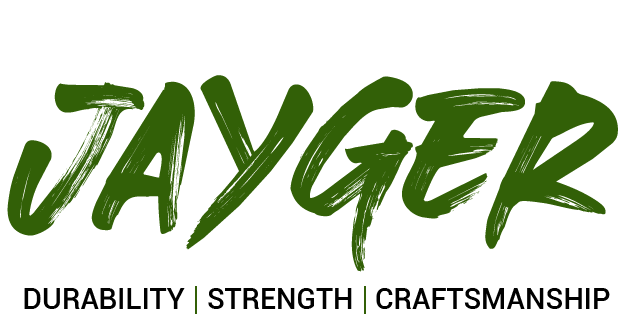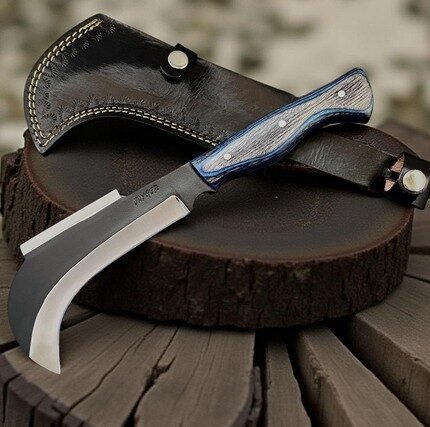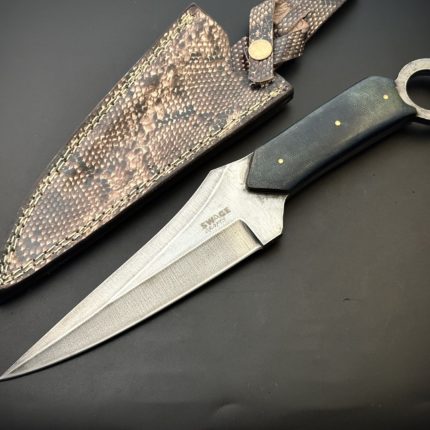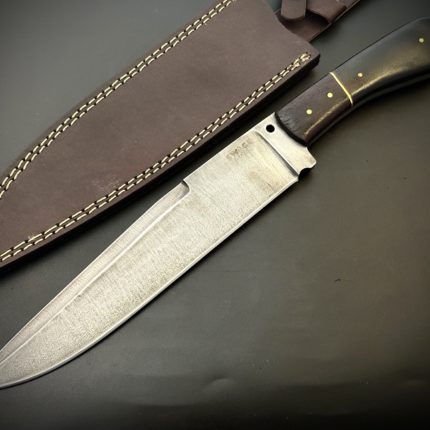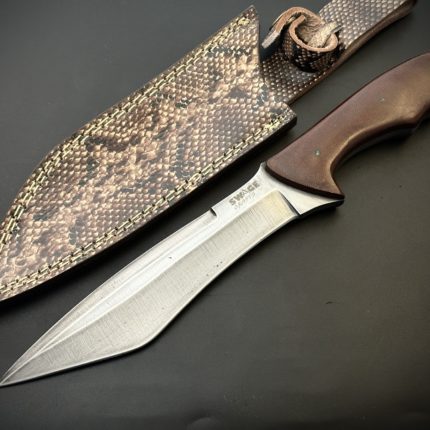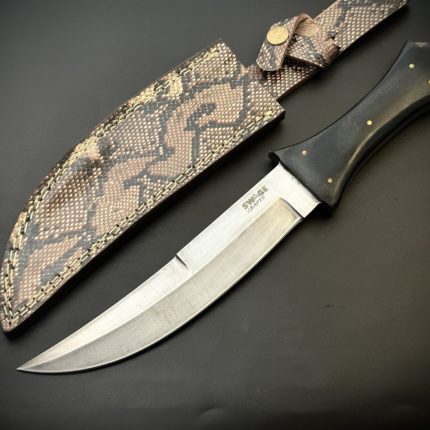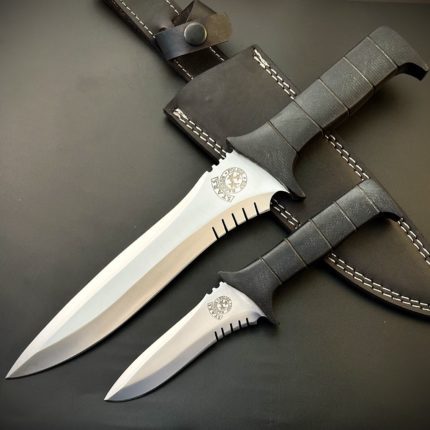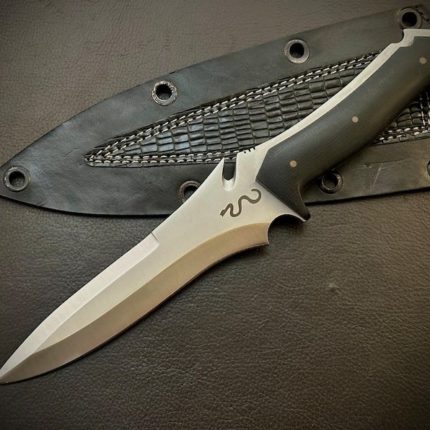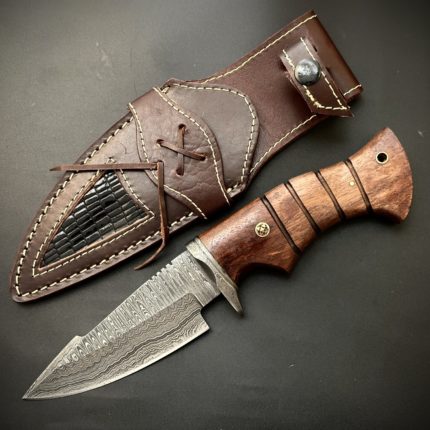Blog
{Gear Up for Adventure}: Unlocking the Power of Hunting Knife
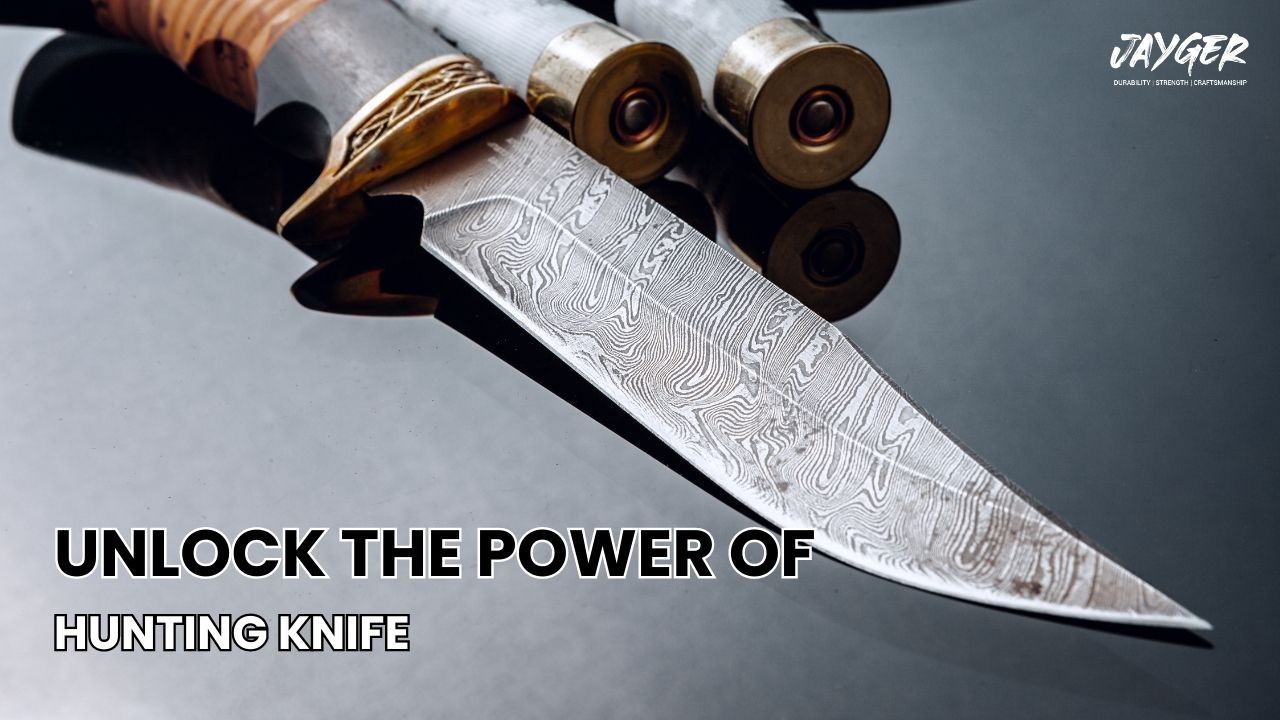
Are you ready to embark on a thrilling adventure in the great outdoors? Gear up and get ready because we are about to unveil the power of the hunting knife. Whether you’re an experienced hunter or just starting to explore the world of hunting, a reliable and versatile knife is an essential tool that can make all the difference. From field dressing to survival situations, a hunting knife is not just a gear but a trusted companion that can assist you in various tasks.
This article will delve into the different types of hunting knives, their features, and how to choose the perfect one for your needs. Get ready to discover the hunting knife’s unrivaled power, precision, and durability and take your outdoor adventures to the next level. Get ready to unlock the true potential of the hunting knife and embrace the thrill of the hunt like never before.
The Importance of a Hunting Knife
A hunting knife is more than just a tool; it is a trusted companion that can assist you in various tasks. From field dressing to survival, a hunting knife is designed to handle everything. One of the primary reasons why a hunting knife is so important is its versatility. It can be used for gutting, skinning, and quartering game, as well as for cutting branches, preparing food, and even self-defense if the need arises. Its multifunctionality makes it an indispensable tool for any outdoor enthusiast.
Additionally, a hunting knife offers unmatched precision and control. The sharp blade allows for clean and precise cuts, making the process of field dressing game more efficient and less messy. With the proper technique and a well-maintained hunting knife, you can ensure that every cut is smooth and precise, minimizing the risk of contaminating the meat.
Furthermore, a hunting knife is a symbol of self-reliance and preparedness. When venturing into the wilderness, you must be equipped with tools to help you navigate unforeseen situations. A hunting knife can start a fire, build a shelter, or even signal for help in an emergency. By carrying a reliable hunting knife, you can have peace of mind knowing that you are prepared for whatever challenges arise during your outdoor adventures.
Different Types of Hunting Knives
When it comes to hunting knives, there are plenty of options. Each hunting knife type has its unique design and features, making it suitable for specific tasks. Here are some of the most common types of hunting knives:
Fixed Blade Knives: Fixed blade knives are the most traditional and widely used type of hunting knife. As the name suggests, the blade is permanently fixed to the handle, providing superior strength and durability. These knives are known for their reliability and ease of maintenance. Fixed blade knives suit heavy-duty tasks such as field dressing and processing games.
Folding Knives: Folding knives, also known as pocket knives, are compact and versatile. The blade can be folded into the handle, making it easy to carry and store. Folding knives are popular among hunters who prefer a lightweight and portable option. However, it’s important to note that fixing knives may be less durable than fixed blade knives and may require more frequent maintenance.
Skinning Knives: Skinnier knife are specifically designed to remove game animals’ hide or skin. These knives typically have a curved blade for precise and efficient skinning. The curved shape helps prevent accidental punctures or cuts to the underlying meat, ensuring that the skin is cleanly removed. Skinning knives are essential for hunters who plan to process their own game.
Gut Hook Knives: Gut hook knives, also known as gutting knives, feature a specialized hook on the spine of the blade. This hook is used to open the abdomen of game animals during field dressing. The gut hook allows easy and controlled gutting without the risk of puncturing the internal organs. Gut hook knives are particularly useful for hunters who want to minimize the chances of contaminating the meat during the gutting process.
Multi-Tool Knives: Multi-tool knives are versatile and combine multiple tools into a single compact unit. These knives often feature additional tools such as screwdrivers, pliers, saws, and can openers, making them suitable for various outdoor tasks. Multi-tool knives are ideal for hunters who value convenience and want to carry a variety of tools without the need for multiple items.
Now that we have explored the different types of hunting knives, let’s move on to the next section, where we will discuss choosing the best hunting knife for your needs.
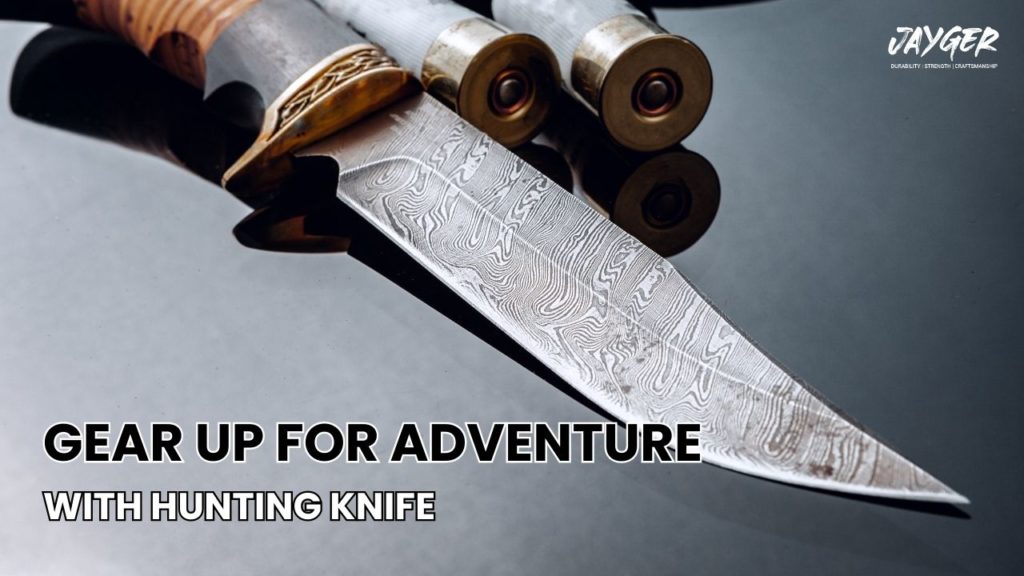
How to Choose the Best Hunting Knife?
Choosing the right hunting knife can be a daunting task, considering the vast array of available options. However, considering a few key factors, you can find a hunting knife that suits your needs perfectly. Here are some factors to consider when choosing a hunting knife:
Blade Length: The blade length of a hunting knife is an important consideration. Longer blades are typically better suited for heavy-duty tasks such as field dressing and processing games. In comparison, shorter blades are more maneuverable and suitable for tasks that require precision, such as skinning. Consider the tasks you will likely encounter and choose a blade length that meets your specific requirements.
Blade Shape: The shape of the blade can significantly impact the knife’s functionality. Different blade shapes excel at various tasks. For example, drop point blades are versatile and suitable for a wide range of functions, while clip point blades are ideal for tasks that require piercing and detail work. Consider the tasks you will likely perform and choose a blade shape that matches your needs.
Handle Material: The handle material plays a crucial role in the overall comfort and grip of the knife. Common handle materials include wood, rubber, and various synthetic materials. Each material has advantages and disadvantages regarding durability, hold, and maintenance. Consider your preferences and choose a comfortable handle material that secures in your hand.
Knife Weight: The knife’s weight can impact its portability and ease of use. Lightweight blades are more suitable for extended usage periods and can be carried without causing fatigue. However, heavier knives may offer better control and durability. Consider your intended use and choose a knife weight that balances comfort and functionality.
Budget: Finally, consider your budget when choosing a hunting knife. While it’s tempting to go for the most expensive option, finding a knife that offers good value for money is essential. Set a budget range and look for knives within that range that meet your requirements in terms of quality and functionality.
Considering these factors, you can narrow your options and find a hunting knife tailored to your specific needs. Remember, choosing the right hunting knife is a personal decision, and what works for one person may not work for another. Take the time to research and test different blades to find the perfect one for you.
Our Best Selling Hunting Knives in the UK
-
 Handmade Damascus Steel Billhook With Leather Sheath£69.99
Handmade Damascus Steel Billhook With Leather Sheath£69.99 -
 Handmade Carbon Steel Billhook With Leather Sheath£59.99
Handmade Carbon Steel Billhook With Leather Sheath£59.99 -
Product on sale
 Hand Forged Spring Steel Spear Point Bowie KnifeOriginal price was: £130.00.£119.99Current price is: £119.99.
Hand Forged Spring Steel Spear Point Bowie KnifeOriginal price was: £130.00.£119.99Current price is: £119.99. -
Product on sale
 Hand Forged Spring Steel Bowie Knife With Leather SheathOriginal price was: £130.00.£119.99Current price is: £119.99.
Hand Forged Spring Steel Bowie Knife With Leather SheathOriginal price was: £130.00.£119.99Current price is: £119.99. -
Product on sale
 Hand Forged 5160 Spring Steel Bowie Knife With SheathOriginal price was: £130.00.£119.99Current price is: £119.99.
Hand Forged 5160 Spring Steel Bowie Knife With SheathOriginal price was: £130.00.£119.99Current price is: £119.99. -
Product on sale
 Handmade Coffin Handle Bowie Knife With SheathOriginal price was: £130.00.£119.99Current price is: £119.99.
Handmade Coffin Handle Bowie Knife With SheathOriginal price was: £130.00.£119.99Current price is: £119.99. -
Product on sale
 Handmade Carbon Steel Leon Kennedy Knife With SheathPrice range: £129.99 through £169.99
Handmade Carbon Steel Leon Kennedy Knife With SheathPrice range: £129.99 through £169.99 -
 Handmade RE4 Jack Krauser Knife Replica With Leather SheathPrice range: £85.00 through £100.00
Handmade RE4 Jack Krauser Knife Replica With Leather SheathPrice range: £85.00 through £100.00 -
Product on sale
 Damascus Steel Hunting Knife With Leather SheathOriginal price was: £79.99.£69.99Current price is: £69.99.
Damascus Steel Hunting Knife With Leather SheathOriginal price was: £79.99.£69.99Current price is: £69.99.
What is the Best Blade Thickness of a Hunting Knife?
When it comes to blade thickness, there is no one-size-fits-all answer. The best blade thickness for a hunting knife depends on the intended use and personal preference. However, some general guidelines can help you make an informed decision.
Thicker blades are typically more durable and better suited for heavy-duty tasks such as field dressing and processing games. A wider edge can withstand more force and is less likely to bend or break under pressure. However, thicker blades may sacrifice some precision and maneuverability, making them less suitable for tasks that require delicate cuts or detailed work.
On the other hand, thinner blades offer better precision and maneuverability. They are ideal for tasks that require clean and precise cuts, such as skinning and caping. Thinner blades are also easier to sharpen and maintain. However, they may not be as durable as thicker blades and may not be suitable for heavy-duty tasks that require more force.
Ultimately, the best blade thickness for a hunting knife depends on your needs and preferences. Consider the tasks you will likely encounter and choose a blade thickness that balances durability and precision.
What is the Best Material for a Hunting Knife?
The material of the blade and hunting knife tang is another important consideration when choosing a hunting knife. Different materials offer varying levels of durability, sharpness, and corrosion resistance. Here are some common materials used in hunting knives:
Stainless Steel: Stainless steel is famous for hunting knife blades due to its excellent corrosion resistance. It is easy to maintain and holds an edge well. However, stainless steel may be weaker than other materials and may require more frequent sharpening.
Carbon Steel: Carbon steel is known for its superior strength and ability to hold a sharp edge. It is more durable than stainless steel but requires regular maintenance to prevent corrosion. Carbon steel blades are ideal for hunters prioritizing strength and sharpness over corrosion resistance.
High-Carbon Stainless Steel: High-carbon stainless steel balances strength, sharpness, and corrosion resistance. It combines the best qualities of carbon steel and stainless steel, making it a popular choice among hunters. High-carbon stainless steel blades are easy to maintain and offer excellent cutting performance.
Damascus Steel: Damascus Steel brings unrivaled performance and beauty to hunting knives. Its superior strength and edge retention make it ideal for demanding tasks in the wilderness. The unique pattern of Damascus steel adds a touch of elegance to the blade, making it a functional tool and a stunning piece of craftsmanship that hunters can proudly wield.
G10: G10 is a type of fiberglass laminate that is commonly used for hunting knife handles. It is lightweight, durable, and offers excellent grip. G10 handles are moisture-resistant and provide a secure grip even in challenging weather conditions.
Consider your specific needs and preferences when choosing the material for your hunting knife. Each material has advantages and disadvantages; what works for one person may not work for another. Take the time to research and handle different materials to find the one that feels comfortable and suits your needs.
Proper Care and Maintenance of a Hunting Knife
Proper care and maintenance are essential to ensure the longevity and optimal performance of your hunting knife. Here are some tips to help you keep your hunting knife in excellent condition:
Cleaning:
- After each use, clean your hunting knife thoroughly to remove any dirt, grime, or blood.
- Use warm soapy water and a soft brush to clean the blade and handle.
- Avoid harsh chemicals or abrasive materials that damage the knife’s finish.
- Dry the knife entirely before storing it to prevent rust.
Sharpening:
- Regularly sharpen your hunting knife to maintain its cutting performance.
- Use a sharpening stone or system to restore the blade’s edge.
- Follow the manufacturer’s instructions and maintain a consistent angle while sharpening.
- Avoid excessive pressure, as it can damage the blade.
Oil the Blade:
- Apply a thin layer of oil to the blade to prevent rust and corrosion.
- Use a lubricant specifically designed for knives or light mineral oil.
- Avoid using vegetable oils, as they can become rancid over time.
- Wipe off any excess fat to prevent it from attracting dirt and debris.
Store Properly:
- Store your hunting knife in a dry and secure location.
- Consider using a sheath or a blade cover to protect the blade from damage and prevent accidental cuts.
- Avoid storing the knife in a leather sheath for extended periods, as the leather can retain moisture and cause rust.
Following these care and maintenance tips ensures that your hunting knife remains in top condition and ready for any outdoor adventure.
Hunting Knife Safety Guidelines
While hunting knives are valuable tools, it’s essential to prioritize safety when using them. Here are some safety guidelines to keep in mind:
Handle with Care:
- Always handle your hunting knife with care and respect.
- Treat it as a sharp and potentially dangerous tool.
- Avoid reckless behavior or misusing the knife.
Keep it Sharp: A sharp knife is safer than a dull one. A flat blade requires more force to cut, increasing the risk of accidents. Regularly sharpen your hunting knife to maintain its cutting performance.
Know Your Knife: Familiarize yourself with the features and operation of your hunting knife—practice opening and closing the blade safely before using it in the field.
Use the Right Technique: Learn proper cutting techniques and use the appropriate grip when using your hunting knife. Avoid using excessive force or the knife in a way that may cause it to slip or snap shut.
Be Mindful of Others: When handling a hunting knife, be mindful of the people around you. Keep a safe distance to avoid accidental injuries.
Store Safely: When not in use, store your hunting knife in a secure location, out of reach of children and unauthorized individuals
